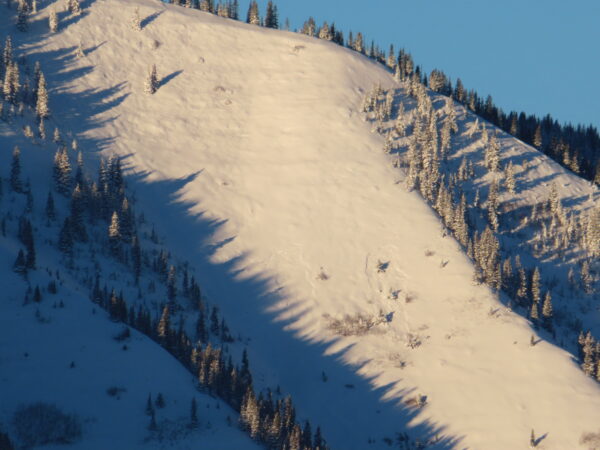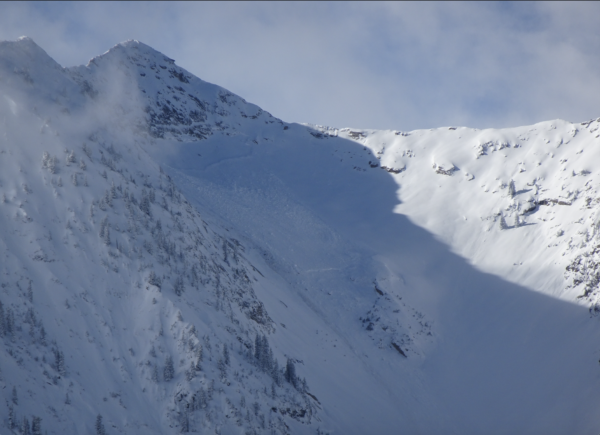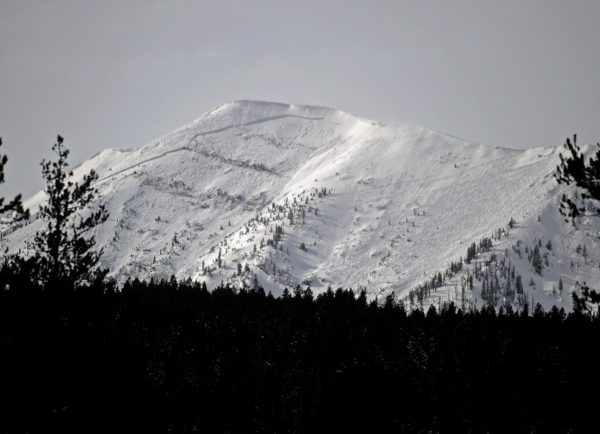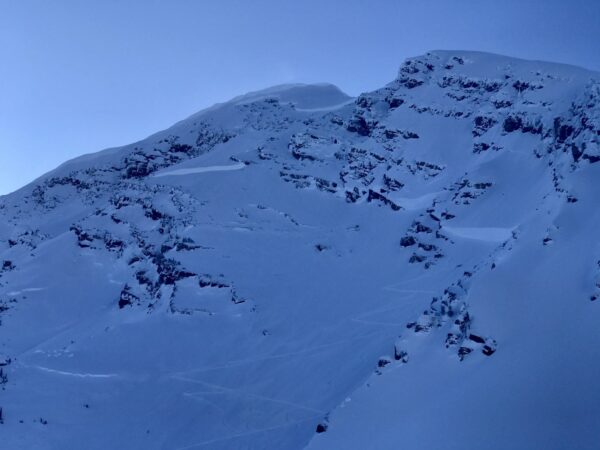The relative size of an avalanche compared to the size of all avalanches that a particular path could produce, rated on a scale from 1 to 5.
R-size is a holistic measure considering everything that contributes to the size of the avalanche, including the depth and width of the slab, the distance from the
crown to the stauchwall, and the amount of snow entrained in the track.
R1 avalanches are very small relative to what the path can produce, R3 avalanches are medium relative to the path, and R5 avalanches are maximum relative to the path. The relative size scale is a function of many factors including the horizontal extent and vertical depth of the fracture, the volume and mass of debris, and the runout distance of the avalanche on a given terrain feature.

A pair of relatively small avalanches (R1). The crowns released from a very small portion of the start zone and involved just a minuscule amount of a full season’s snowpack and volume. Credit: Crested Butte Avalanche Center

A relatively small avalanche (R2). This track has potential to produce a much wider and longer avalanche involving much more snowpack. Credit: Crested Butte Avalanche Center

A medium-sized avalanche (R3), relative to its path potential. The avalanche released across about half of the start zone and involved a mid-season’s snowpack. Credit: Gallatin National Forest Avalanche Center

A relatively large avalanche (R4). The crown involves most of the season’s snowpack, extends across most of the start zone, and large volume of debris ran far into its runout without expanding it. Credit: Flathead Avalanche Center

A very large avalanche (R5). The avalanche widened and extended its path through mature forest, and involved all of the late season snowpack. Credit: Colorado Avalanche Information Center
